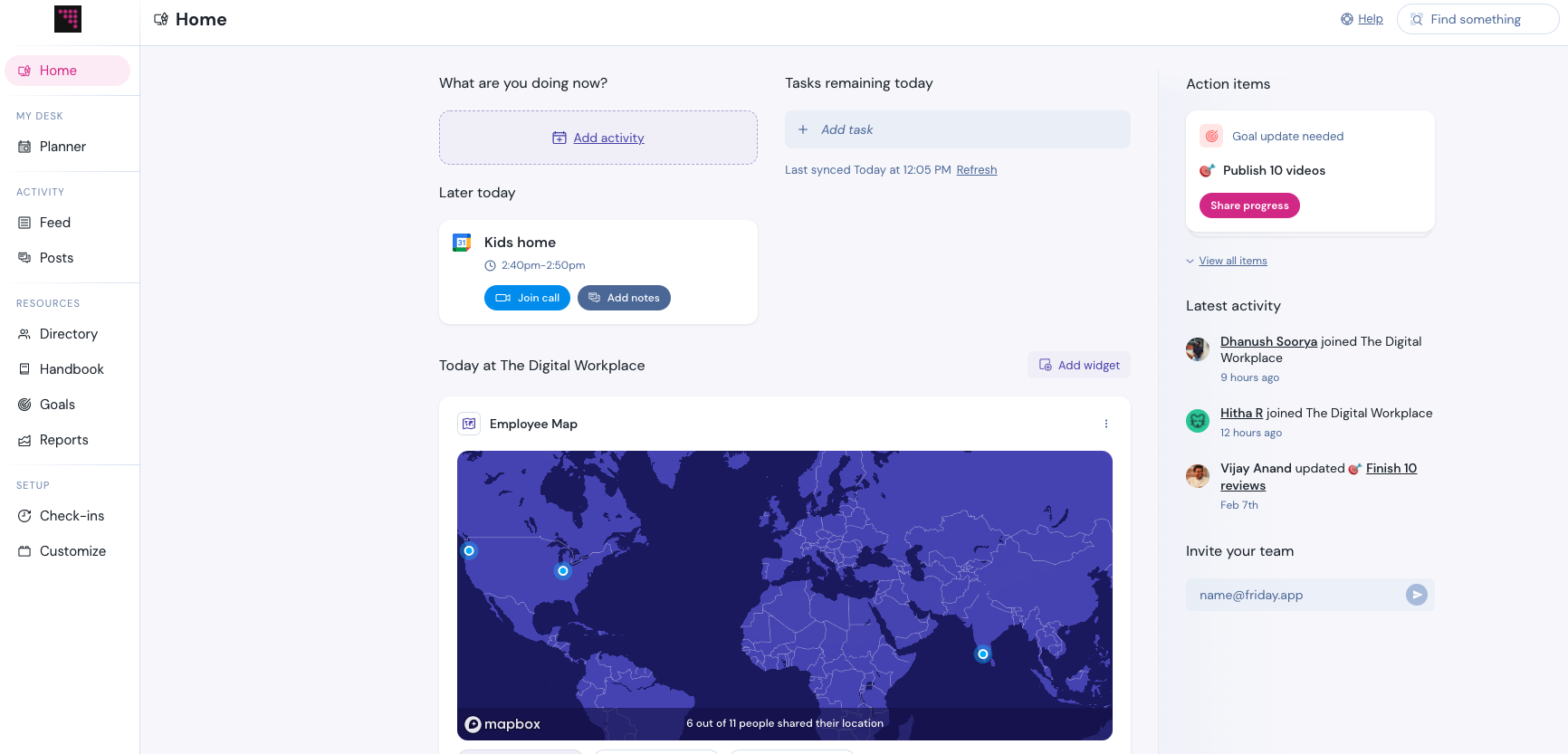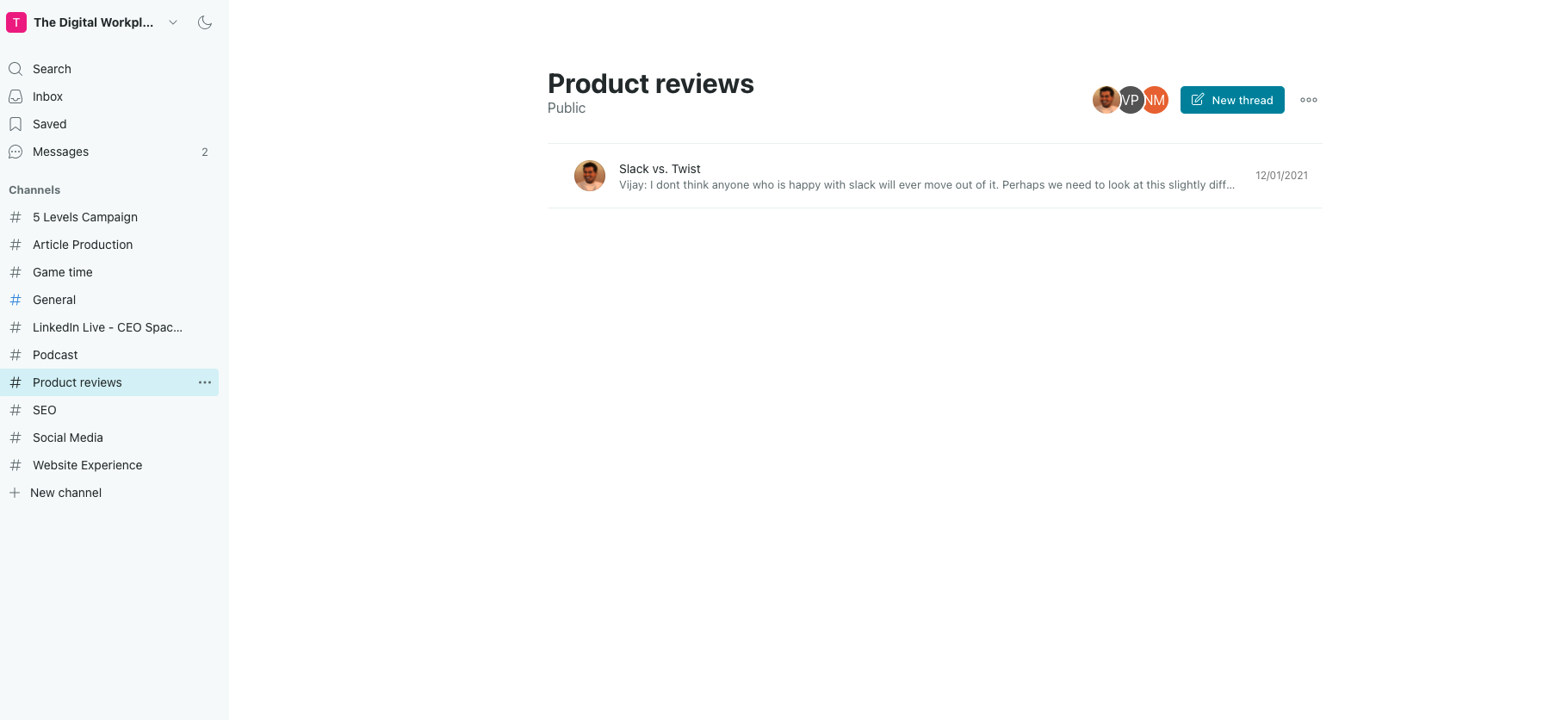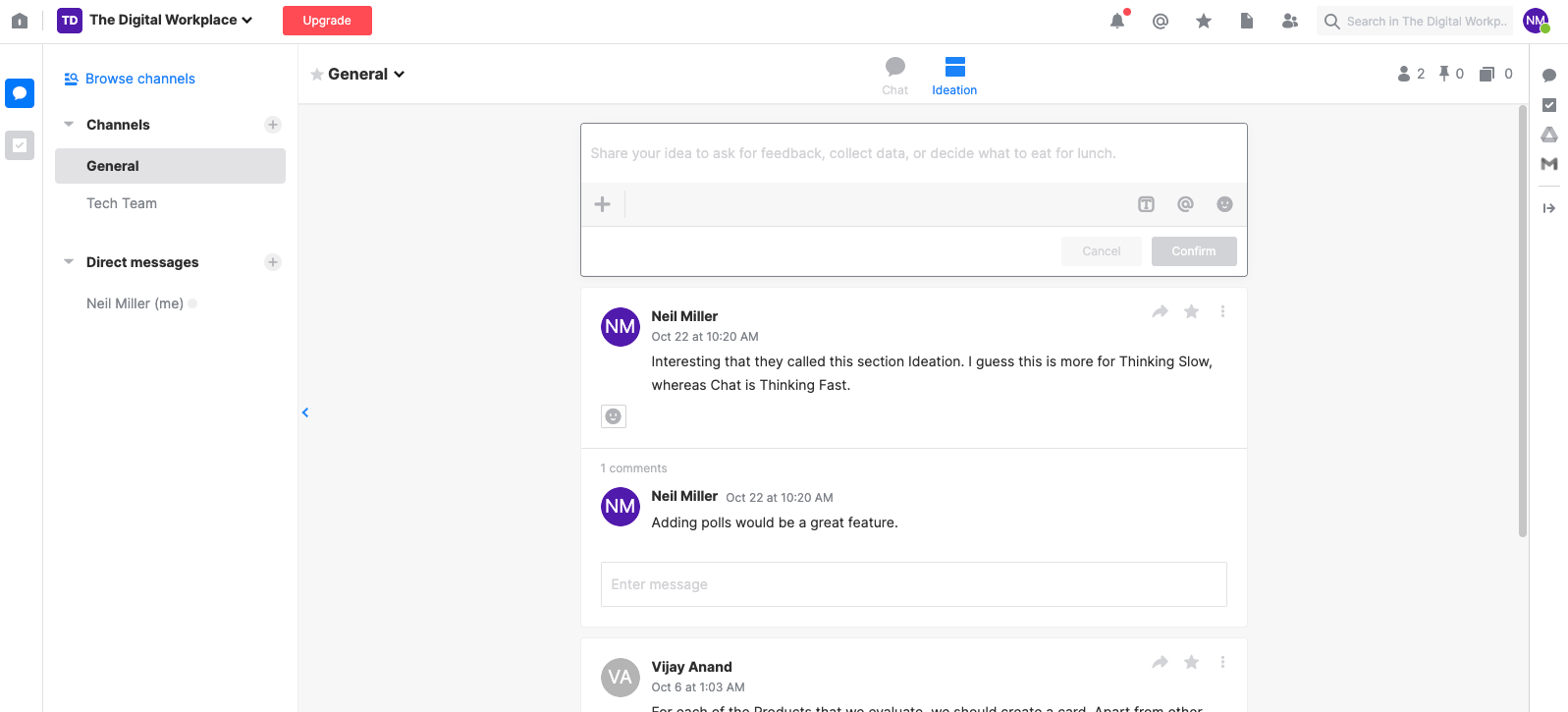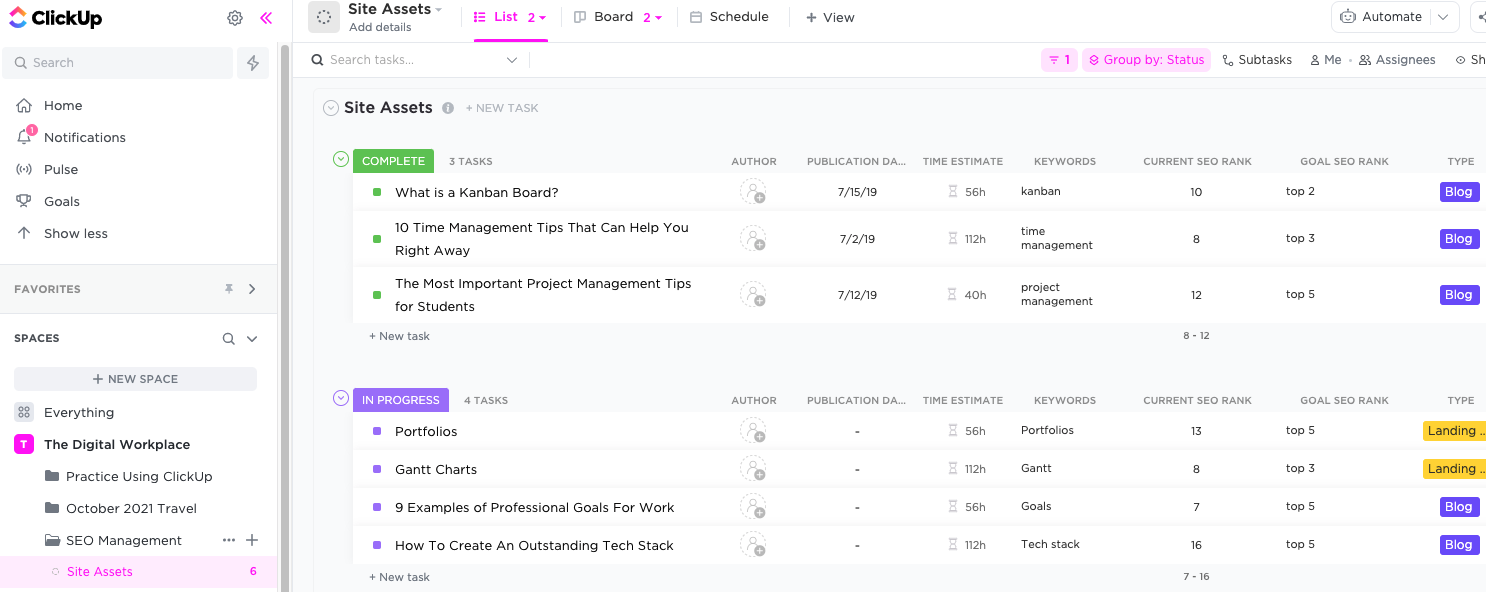What’s the most influential part of your digital workplace?
The values document you wrote up and shared with everyone? Nope.
Your team ground rules? If only…
Your team leaders? They try, but no.
The most influential part of your digital workplace is something you never interviewed. You have very little power to change how it functions. And you likely have no idea how much power it has over your organization.
It is…*dramatically sweeps back the curtain*
Your work nucleus.
*gasping, fainting, looks of horror*
What is the work nucleus?
The work nucleus of your digital workplace sits at the center of all the work you do. It’s the thing that all work flows in and out of.
The work nucleus impacts and often instructs how all the other systems work (collaboration, culture, leadership, and productivity). It makes decisions for you that you never even realized.
The worst part?
Most leaders couldn’t tell you what or where their nucleus is, and they are blind to its influence.
The danger of not knowing your work nucleus
Most organizations never consciously choose the work nucleus. They start using lots of different software. Then, slowly, one tool emerges as more useful or easier to use than the others. It becomes the favorite and you start to link all the other tools to it.
For a long time, email was the digital nucleus of many workplaces. It influenced the way people structured their day, stored information, collaborated, and more.
If you don’t intentionally decide what’s at your nucleus, you give up control of your digital workplace to the easiest-to-use application, or whatever tool in en vogue. You allow that tool to define your systems for you.
How to determine what your nucleus is
Here are a few questions to figure out what you currently have at the center.
1. What’s the first tool people check when they start their day?
What happens in that tool for the first 15-30 minutes often determines the trajectory of the rest of the day.
2. When it’s time to “get work done”, what’s the tool or tab they open?
When people feel like everything is in order and they enter Focus mode, what tool do they open?
3. Which tool would most affect your work if it was shut down?
Can you still get work done if a particular tool crashes?
4. Which tool do you integrate data into?
The more data is pulled into an app, the greater the likelihood that it is at your core.
5. Who wins when there is a feature overlap?
If multiple tools provide a chat option, which one do you gravitate towards more?
Aggregating the answers to these questions should give you a good idea what is at your core.
You may not have a single answer for your entire organization. For example, your customer success team might have their case management tool as the core, while the marketing team lives in a project management tool.
Suites vs. platforms
Suites are bundles of tools that are branded similarly and might have some built in integrations. Examples are Google Workplace, Office 365, and Zoho One.
Platforms on the other hand are single environments where multiple types of apps can be built. Examples are Clickup, Swit, and Kissflow.
It’s not helpful to say that a suite is the core. Instead be specific as to which app inside the suite is most essential, such as Microsoft Teams or Gmail.
A platform can be the core since it’s all in a much tighter ecosystem.
The two most common workplace work nuclei
1. Collaboration-centric workplaces
Collaboration-centric digital workplaces have a communication tool at the center. This could be email, or it may have shifted to a messaging platform like Slack or Microsoft Teams. A video tool like Zoom might also be the most-used tool. Most companies operate as a collaboration-centric workplace.
Why it’s good
Collaboration is the heartbeat of how humans work together. You can get quick answers and consensus. Modern collaboration tools like instant messaging and video calls feel more engaging. They make you feel like you are getting a lot done.
Why it’s bad
Collaboration rewards activity, not outcomes. If there’s a flurry of discussions in Slack, you feel like a lot is happening. A day filled with Zoom meetings feels productive, but you may not have got any actual work done.
Collaboration is for dopamine junkies. You get a quick rush when you are in the middle of a lot of conversations. But you can get addicted to the rush, and avoid the more important focused work you need to do.
Constant collaboration is exhausting. Long video calls are brutal. You have to be in Available mode all the time and it wears you down. You are constantly checking messages and waiting for something to distract you.
Collaboration doesn’t give the context. If you have to jump out of the app you are working in to have a conversation, you are losing steam. It’s better if your collaboration is embedded into the context of your work.
Collaboration has no finish line. As soon as you hit inbox-zero, there’s another flurry of messages. It’s a hamster wheel you can’t get off. Your goal becomes to clean out messages and you’ve lost the plot.
2. Work management-centric workplaces
This approach puts the tools that manage actual work as the center. Most commonly, you’ll find project management tools. Process management tools are better if most of your business is structured and automated. Or if responding to customers is most important, a case management tool might be the center.
Collaboration tools are still important, but they take a secondary role. For example, recruiters can have conversations about applicants in recruiting software instead of jumping over to Slack.
Why it’s good
Work management puts the focus on getting work done. When it’s time to work, you know exactly where to go to move things forward. Conversations don’t dictate the work day, but they support the work that’s going on.
Why it’s bad
It’s hard to find one tool for everyone. Collaboration is pretty similar if you are an engineer or a salesperson. But work management requires very different features depending on the team. The finance team needs to streamlines processes, but engineering needs something more flexible.
As mentioned before, some work management tools offer many types of work on the same platform, but you’ll need to make sure it fits your needs.
Objectives can still be missed. Work management tools reward you for getting work done, but they don’t guarantee that you are doing the right work. So, even though you’ve moved beyond a flurry of random activity, you still might not be getting where you want to go.
Other digital options for your nucleus
If you are a bit of a rebel or a free thinker, you might consider putting something else at the center.
A calendar-centric workplace
High-level digital workplaces put a large value on time. What if your entire digital workplace ran off of a calendar? This can enforce good habits and make sure you spend your time on what is most important.
Imagine if everything started with the calendar. You have blocks of time for focusing on projects where you have links to the right work management tool. Then you have blocks time for Available mode where you are active in collaboration tools. The calendar event has all the information you need to get your work done.
This approach takes a lot of discipline, but it has merit when thinking about an idealized future.
An objective-centric workplace
Imagine that the first thing you checked everyday was your goal or OKR software. It has a dashboard to let you know what’s moving along and what needs attention. Each section has links to different projects to work on to advance your objectives.
This solves the issue of work management tools not always being aligned to the bigger picture. It can also help you from being pulled into projects that are outside your goals.
The downside is that goals come in all shapes and sizes and it’s hard to find one OKR tool that works for all your team.
Choose on purpose
If you don’t choose what the work nucleus of your digital workplace is, it will be chosen for you. Don’t allow the easiest, or most immediately rewarding tool to form the center and dictate the way your other systems operate.
As a leader, you need to find a tool that matches with your values and goals. Don’t be afraid to experiment with different options, but remember that adoption of a new tool takes a long time and a lot of follow through.
As a first step, determine what’s currently at your nucleus, and decide if you are ok with it. If not, find something new. Then, you are ready to build the rest of your digital workplace around it.
Photo by Aleksandar Pasaric from Pexels
What’s the most influential part of your digital workplace?
The values document you wrote up and shared with everyone? Nope.
Your team ground rules? If only…
Your team leaders? They try, but no.
The most influential part of your digital workplace is something you never interviewed. You have very little power to change how it functions. And you likely have no idea how much power it has over your organization.
It is…*dramatically sweeps back the curtain*
Your work nucleus.
*gasping, fainting, looks of horror*
What is the work nucleus?
The work nucleus of your digital workplace sits at the center of all the work you do. It’s the thing that all work flows in and out of.
The work nucleus impacts and often instructs how all the other systems work (collaboration, culture, leadership, and productivity). It makes decisions for you that you never even realized.
The worst part?
Most leaders couldn’t tell you what or where their nucleus is, and they are blind to its influence.
The danger of not knowing your work nucleus
Most organizations never consciously choose the work nucleus. They start using lots of different software. Then, slowly, one tool emerges as more useful or easier to use than the others. It becomes the favorite and you start to link all the other tools to it.
For a long time, email was the digital nucleus of many workplaces. It influenced the way people structured their day, stored information, collaborated, and more.
If you don’t intentionally decide what’s at your nucleus, you give up control of your digital workplace to the easiest-to-use application, or whatever tool in en vogue. You allow that tool to define your systems for you.
How to determine what your nucleus is
Here are a few questions to figure out what you currently have at the center.
1. What’s the first tool people check when they start their day?
What happens in that tool for the first 15-30 minutes often determines the trajectory of the rest of the day.
2. When it’s time to “get work done”, what’s the tool or tab they open?
When people feel like everything is in order and they enter Focus mode, what tool do they open?
3. Which tool would most affect your work if it was shut down?
Can you still get work done if a particular tool crashes?
4. Which tool do you integrate data into?
The more data is pulled into an app, the greater the likelihood that it is at your core.
5. Who wins when there is a feature overlap?
If multiple tools provide a chat option, which one do you gravitate towards more?
Aggregating the answers to these questions should give you a good idea what is at your core.
You may not have a single answer for your entire organization. For example, your customer success team might have their case management tool as the core, while the marketing team lives in a project management tool.
Suites vs. platforms
Suites are bundles of tools that are branded similarly and might have some built in integrations. Examples are Google Workplace, Office 365, and Zoho One.
Platforms on the other hand are single environments where multiple types of apps can be built. Examples are Clickup, Swit, and Kissflow.
It’s not helpful to say that a suite is the core. Instead be specific as to which app inside the suite is most essential, such as Microsoft Teams or Gmail.
A platform can be the core since it’s all in a much tighter ecosystem.
The two most common workplace work nuclei
1. Collaboration-centric workplaces
Collaboration-centric digital workplaces have a communication tool at the center. This could be email, or it may have shifted to a messaging platform like Slack or Microsoft Teams. A video tool like Zoom might also be the most-used tool. Most companies operate as a collaboration-centric workplace.
Why it’s good
Collaboration is the heartbeat of how humans work together. You can get quick answers and consensus. Modern collaboration tools like instant messaging and video calls feel more engaging. They make you feel like you are getting a lot done.
Why it’s bad
Collaboration rewards activity, not outcomes. If there’s a flurry of discussions in Slack, you feel like a lot is happening. A day filled with Zoom meetings feels productive, but you may not have got any actual work done.
Collaboration is for dopamine junkies. You get a quick rush when you are in the middle of a lot of conversations. But you can get addicted to the rush, and avoid the more important focused work you need to do.
Constant collaboration is exhausting. Long video calls are brutal. You have to be in Available mode all the time and it wears you down. You are constantly checking messages and waiting for something to distract you.
Collaboration doesn’t give the context. If you have to jump out of the app you are working in to have a conversation, you are losing steam. It’s better if your collaboration is embedded into the context of your work.
Collaboration has no finish line. As soon as you hit inbox-zero, there’s another flurry of messages. It’s a hamster wheel you can’t get off. Your goal becomes to clean out messages and you’ve lost the plot.
2. Work management-centric workplaces
This approach puts the tools that manage actual work as the center. Most commonly, you’ll find project management tools. Process management tools are better if most of your business is structured and automated. Or if responding to customers is most important, a case management tool might be the center.
Collaboration tools are still important, but they take a secondary role. For example, recruiters can have conversations about applicants in recruiting software instead of jumping over to Slack.
Why it’s good
Work management puts the focus on getting work done. When it’s time to work, you know exactly where to go to move things forward. Conversations don’t dictate the work day, but they support the work that’s going on.
Why it’s bad
It’s hard to find one tool for everyone. Collaboration is pretty similar if you are an engineer or a salesperson. But work management requires very different features depending on the team. The finance team needs to streamlines processes, but engineering needs something more flexible.
As mentioned before, some work management tools offer many types of work on the same platform, but you’ll need to make sure it fits your needs.
Objectives can still be missed. Work management tools reward you for getting work done, but they don’t guarantee that you are doing the right work. So, even though you’ve moved beyond a flurry of random activity, you still might not be getting where you want to go.
Other digital options for your nucleus
If you are a bit of a rebel or a free thinker, you might consider putting something else at the center.
A calendar-centric workplace
High-level digital workplaces put a large value on time. What if your entire digital workplace ran off of a calendar? This can enforce good habits and make sure you spend your time on what is most important.
Imagine if everything started with the calendar. You have blocks of time for focusing on projects where you have links to the right work management tool. Then you have blocks time for Available mode where you are active in collaboration tools. The calendar event has all the information you need to get your work done.
This approach takes a lot of discipline, but it has merit when thinking about an idealized future.
An objective-centric workplace
Imagine that the first thing you checked everyday was your goal or OKR software. It has a dashboard to let you know what’s moving along and what needs attention. Each section has links to different projects to work on to advance your objectives.
This solves the issue of work management tools not always being aligned to the bigger picture. It can also help you from being pulled into projects that are outside your goals.
The downside is that goals come in all shapes and sizes and it’s hard to find one OKR tool that works for all your team.
Choose on purpose
If you don’t choose what the work nucleus of your digital workplace is, it will be chosen for you. Don’t allow the easiest, or most immediately rewarding tool to form the center and dictate the way your other systems operate.
As a leader, you need to find a tool that matches with your values and goals. Don’t be afraid to experiment with different options, but remember that adoption of a new tool takes a long time and a lot of follow through.
As a first step, determine what’s currently at your nucleus, and decide if you are ok with it. If not, find something new. Then, you are ready to build the rest of your digital workplace around it.
)
)
)







